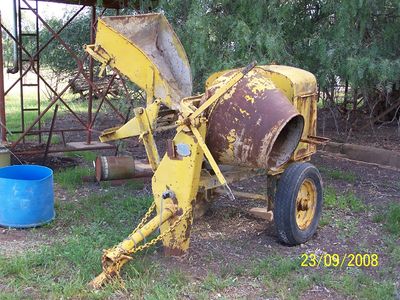Cement: Difference between revisions
(Now uses template Template:Breadcrumb) |
|||
| Line 1: | Line 1: | ||
{{ | {{Breadcrumb|Materials}} | ||
{{ | {{Breadcrumb|Housing and construction}} | ||
==Book: "Small-scale production of Portland cement"== | ==Book: "Small-scale production of Portland cement"== | ||
Revision as of 13:05, 7 April 2011
Main > Housing and construction
Book: "Small-scale production of Portland cement"
From the foreword: One of the main reasons for the limited expansion of the production capacity of the cement industry has been the choice of technology in favour of large-scale production facilities. Most developing countries, in the past, have opted for large-scale rotary-kiln technologies, requiring large investment and long gestation periods. For a variety of reasons, such as supply-side constraints imposed by energy costs, the size of the market and its volatility, and rising distribution costs, these large plants have neither been able to achieve economies of scale nor have they been able to bridge the demand-supply gap.
The advantages of small-scale, decentralized cement production are being increasingly recognized. The inherent flexibility of small-scale operations to cope with volatile and shifting demands, and their ability to take best advantage of available factors of production in developing countries are the main sources of their strength. Yet, the total installed capacity of mini-cement plants outside China and India remains very limited, mainly because of the lack of wide-scale dissemination of the required information relating to this technology among prospective entrepreneurs.
Original source: "Small-scale production of portland cement" by United Nations Centre for Human Settlements, 1993; 92 pages; also on Google Books; alternative link here.
Communications
(source unknown) "My friend Bob Gower, who I talk to primarily through Facebook, his family is in cement. His brother has been doing interesting things making his own cement mixing machines, and making interesting mixes, for quite an enjoyable while. My friend Bob talked to him. He's not into the sustainability model. He just loves cement. We can establish a relationship with him if we have more expert questions about cement." - George D. Gower, P.E. Refractory Minerals Co., Inc. W-610-869-3031x201 C-484-467-2333 refmin@verizon.net
Alternatives to Portland cement
From Practical Action: "Since its invention in the first half of the 19th century, Portland cement has become the most widely available cementitious material. Its dominance over alternative cements has been in part, due to successful, aggressive marketing. This is despite its clear technical disadvantages for certain applications. Alternative cements are not capable of replacing Portland cement totally, but they can be used in the many construction applications where they have advantages. These are as mortars, renders and non-structural concretes. Alternative cements are not normally considered suitable for structural applications, such as reinforced concrete beams and columns."
- lime, pozzolanas, gypsum
- geopolymers: lower temperature, requires lye
- rammed earth (beautiful but labor intensive)
- Guastavino masonry can replace Portland cement in some structural applications
- Howtopedia: How to Make Alternatives to Portland Cement
Alternative: magnesium-based cements
There is a whole class of cement that was very popular in the days before the invention and manufacture of Portland cement quickly replaced its use. Generally classified as magnesium-based cement, this material was used in historic times, dating back to ancient times in Europe, India, and China, among other countries. It is unfortunate that Portland cement has replaced the use of these magnesium products because there are many ways in which they are superior.
One of the advantages is that production takes place at much lower temperature. This makes it more suitable for community-scale production and makes the use of solar and biomass heat much more realistic. GreenHomeBuilding has some articles about it (longer article here and shorter article here). They mention a natural affinity of Mg based cements for cellulose materials.
There is a TecEco Newsletter dated 2010 "What it takes for Commercialisation of a Carbonating Magnesium Cement" [1] (internal .pdf'd copy here) that lists many different magnesium cements, production methods and patents.
- "Sorel Cement" [2] - magnesium-oxychloride cement (good fire and solvent resistance, very light)
- paper: "Magnesium Oxide, Magnesium Chloride, and Phosphate-based Cements" By George Swanson, (internal copy here)
- older patent: "Magnesium Cement" (issued June 1989)
- Argonne National Laboratory: Ceramicrete
- Novacem carbon negative cement, also magnesium-based (proprietary, patent pending)
- product ecology:
- extraction of minerals from clays will also extract magnesia as a byproduct
- waste heat from some processes can be used to make these cements
